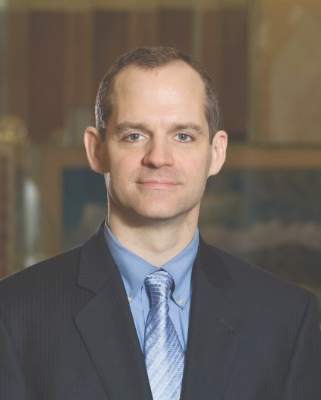User login
Perhaps it’s the northern climate. Perhaps it’s that people at my office work a lot in the absence of office windows. But there are a lot of seasonal affective disorder lamps around me.
The one in my office turns on automatically (frequently in my absence), and the eerie blue light from my office floods the cubicles outside my door.
At a social gathering the other day, I related the story of my “moody blues office,” and somebody asked if the blue light for seasonal affective disorder was better than the white light. I did not know, so I did some reading.
It turns out that there is a retinal photoreceptor in the ganglion cells with a maximum sensitivity of 470-490 nm to blue light. These non-image–forming photoreceptors play a role in regulating the biological clock. Experiments have been conducted evaluating the impact of different wavelengths of light on symptoms of SAD.
In a study of people with subsyndromal SAD, investigators randomized 48 participants to bright white fluorescent light or narrow-band blue light (peak LED wavelength, 470 nm). Patients were exposed to the light for 20 minutes on 5 consecutive days. Standard scales measuring mood and fatigue were administered (BMC Psychiatry. 2016 Feb 18;16:27).
Investigators did not detect differences between the groups, and the authors concluded they had comparable efficacy.
Although the sample size is small, the data suggest that blue light is comparable to white light. I will start needing to pay attention if the folks in the cubicles outside my office are less depressed.
Dr. Ebbert is professor of medicine, a general internist at the Mayo Clinic in Rochester, Minn., and a diplomate of the American Board of Addiction Medicine. Dr. Ebbert has no relevant financial disclosures about this article.
Perhaps it’s the northern climate. Perhaps it’s that people at my office work a lot in the absence of office windows. But there are a lot of seasonal affective disorder lamps around me.
The one in my office turns on automatically (frequently in my absence), and the eerie blue light from my office floods the cubicles outside my door.
At a social gathering the other day, I related the story of my “moody blues office,” and somebody asked if the blue light for seasonal affective disorder was better than the white light. I did not know, so I did some reading.
It turns out that there is a retinal photoreceptor in the ganglion cells with a maximum sensitivity of 470-490 nm to blue light. These non-image–forming photoreceptors play a role in regulating the biological clock. Experiments have been conducted evaluating the impact of different wavelengths of light on symptoms of SAD.
In a study of people with subsyndromal SAD, investigators randomized 48 participants to bright white fluorescent light or narrow-band blue light (peak LED wavelength, 470 nm). Patients were exposed to the light for 20 minutes on 5 consecutive days. Standard scales measuring mood and fatigue were administered (BMC Psychiatry. 2016 Feb 18;16:27).
Investigators did not detect differences between the groups, and the authors concluded they had comparable efficacy.
Although the sample size is small, the data suggest that blue light is comparable to white light. I will start needing to pay attention if the folks in the cubicles outside my office are less depressed.
Dr. Ebbert is professor of medicine, a general internist at the Mayo Clinic in Rochester, Minn., and a diplomate of the American Board of Addiction Medicine. Dr. Ebbert has no relevant financial disclosures about this article.
Perhaps it’s the northern climate. Perhaps it’s that people at my office work a lot in the absence of office windows. But there are a lot of seasonal affective disorder lamps around me.
The one in my office turns on automatically (frequently in my absence), and the eerie blue light from my office floods the cubicles outside my door.
At a social gathering the other day, I related the story of my “moody blues office,” and somebody asked if the blue light for seasonal affective disorder was better than the white light. I did not know, so I did some reading.
It turns out that there is a retinal photoreceptor in the ganglion cells with a maximum sensitivity of 470-490 nm to blue light. These non-image–forming photoreceptors play a role in regulating the biological clock. Experiments have been conducted evaluating the impact of different wavelengths of light on symptoms of SAD.
In a study of people with subsyndromal SAD, investigators randomized 48 participants to bright white fluorescent light or narrow-band blue light (peak LED wavelength, 470 nm). Patients were exposed to the light for 20 minutes on 5 consecutive days. Standard scales measuring mood and fatigue were administered (BMC Psychiatry. 2016 Feb 18;16:27).
Investigators did not detect differences between the groups, and the authors concluded they had comparable efficacy.
Although the sample size is small, the data suggest that blue light is comparable to white light. I will start needing to pay attention if the folks in the cubicles outside my office are less depressed.
Dr. Ebbert is professor of medicine, a general internist at the Mayo Clinic in Rochester, Minn., and a diplomate of the American Board of Addiction Medicine. Dr. Ebbert has no relevant financial disclosures about this article.

